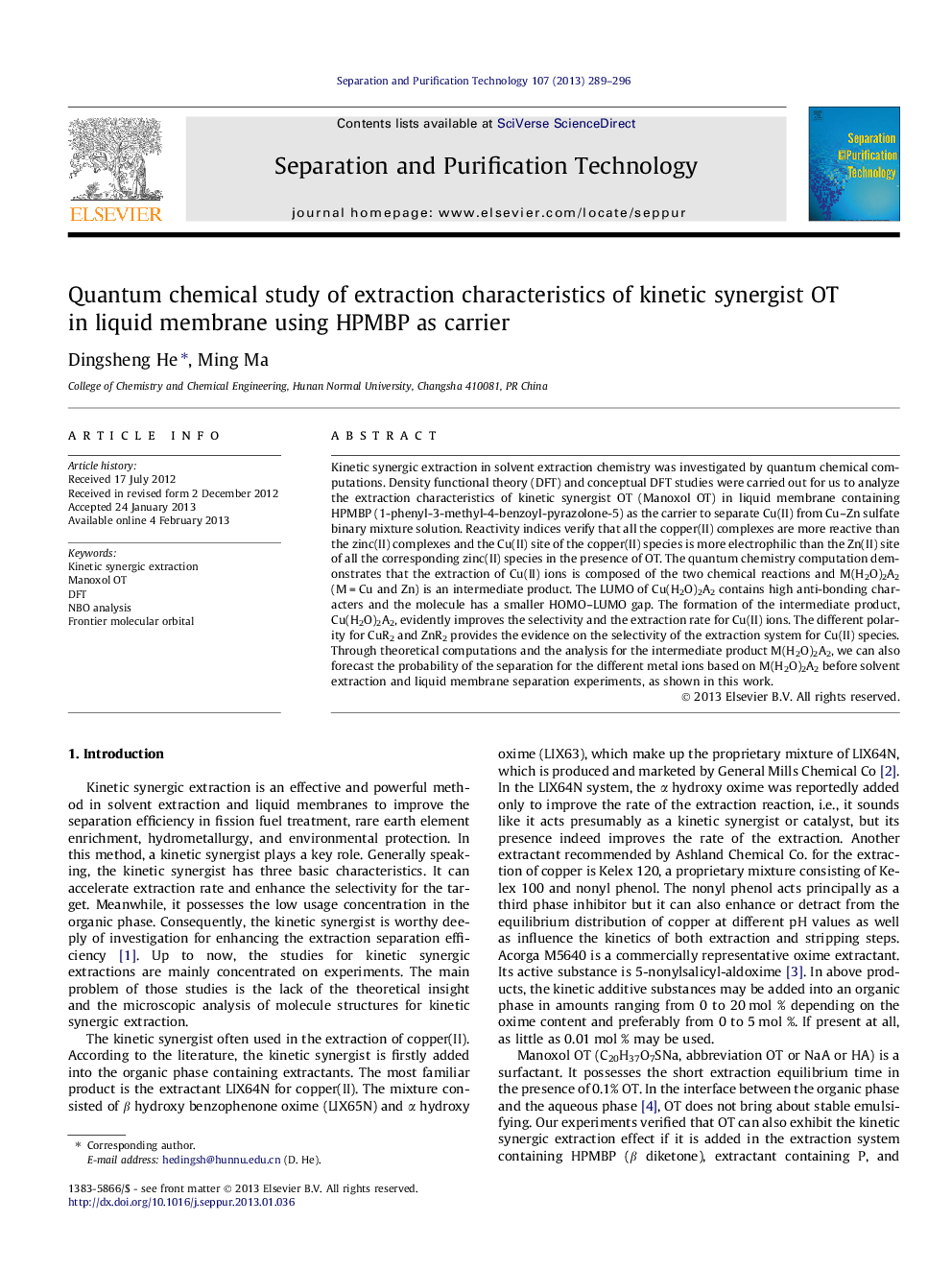| کد مقاله | کد نشریه | سال انتشار | مقاله انگلیسی | نسخه تمام متن |
|---|---|---|---|---|
| 641782 | 1457012 | 2013 | 8 صفحه PDF | دانلود رایگان |

Kinetic synergic extraction in solvent extraction chemistry was investigated by quantum chemical computations. Density functional theory (DFT) and conceptual DFT studies were carried out for us to analyze the extraction characteristics of kinetic synergist OT (Manoxol OT) in liquid membrane containing HPMBP (1-phenyl-3-methyl-4-benzoyl-pyrazolone-5) as the carrier to separate Cu(II) from Cu–Zn sulfate binary mixture solution. Reactivity indices verify that all the copper(II) complexes are more reactive than the zinc(II) complexes and the Cu(II) site of the copper(II) species is more electrophilic than the Zn(II) site of all the corresponding zinc(II) species in the presence of OT. The quantum chemistry computation demonstrates that the extraction of Cu(II) ions is composed of the two chemical reactions and M(H2O)2A2 (M = Cu and Zn) is an intermediate product. The LUMO of Cu(H2O)2A2 contains high anti-bonding characters and the molecule has a smaller HOMO–LUMO gap. The formation of the intermediate product, Cu(H2O)2A2, evidently improves the selectivity and the extraction rate for Cu(II) ions. The different polarity for CuR2 and ZnR2 provides the evidence on the selectivity of the extraction system for Cu(II) species. Through theoretical computations and the analysis for the intermediate product M(H2O)2A2, we can also forecast the probability of the separation for the different metal ions based on M(H2O)2A2 before solvent extraction and liquid membrane separation experiments, as shown in this work.
Figure optionsDownload as PowerPoint slideHighlights
► Quantum chemical computations were used in practical extraction separation.
► DFT reactivity indexes, NBO analysis, and frontier molecular orbital are used.
► The enhancement of selectivity and transport rate of Cu(II) was analyzed.
► The probability of the separation for the different metal ions is forecasted.
Journal: Separation and Purification Technology - Volume 107, 2 April 2013, Pages 289–296